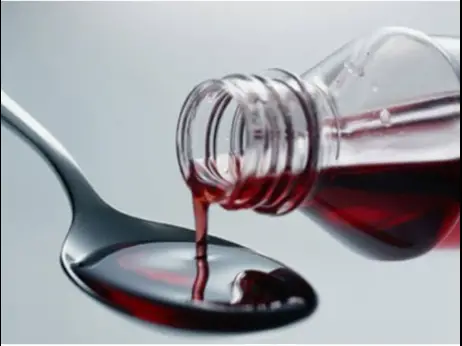Fumigation
Fumigation is a method of spraying chemicals (fumigants) in the form of fine mist or vapors in the area (confined space) to reduce the bioburden of the area the Fumigant is a chemical substance which is having bactericidal, fungicidal & sporicidal activity at a defined concentration level.
Gaseous decontaminants by Fumigation reach the parts that ordinary disinfectants do not reach. If we can locate all the contaminated surfaces then liquid disinfection is easier, quicker, and more effective. If we can remove all contaminated material then autoclaving is more effective. However, if we cannot locate all contamination as:
- The distribution of contamination is unknown
- Areas of contamination cannot be accessed
- Contamination is very widespread then gaseous disinfection is required
Why do we use gaseous disinfectants (FUMIGANT)?
- To decontaminate after a laboratory accident
- Ensure the laboratory is decontaminated before the annual servicing
- To prevent background contamination
- To create a sterile environment
- To disinfect after a bioterrorist attack or natural outbreak
Some Examples of Gaseous Disinfectant
- Formaldehyde
- Vapour Hydrogen Peroxide
- Vapour Phase Hydrogen Peroxide (Virosil)
- Chlorine Dioxide
- None are the perfect gaseous disinfectant
Perfect Gaseous Disinfectant
- Low toxicity – human and environmental
- Rapid-acting
- Easily removed
- Good materials compatibility
- Penetrative – into liquids, solids?
- Easy to use
- Cheap
Assurance – Biological indicators
- Repeatable fumigation is only guaranteed if all environmental conditions remain the same
- Biological indicators are a simple way of demonstrating successful fumigation
- Biological indicators may be used every time in critical areas
Biological indicators
Impregnated filter paper (not recommended)
- Effective for vapors, not for surface decontaminants
- Positive/negative in growth broth
- The presence of tracer can be confirmed by culturing methods
- Not always a realistic challenge for formaldehyde fumigation
Steel carriers/coupons
- Spores dried onto the metal surface, exposed during fumigation
- Positive/negative in growth broth
- The presence of tracer can be confirmed by culturing methods
- Realistic challenge
Fumigation failures
- Pots fail
- Insufficient hold time
- Was the area sealed or were there significant leaks
- Ventilation operated too soon, dampers not closed
- Too much clutter or absorbent materials
- Too cold
Hydrogen peroxide technology
“a substance that destroys or eliminates all forms of microbial life in the inanimate environment, including all forms of vegetative bacteria, bacterial spores, fungi, fungal spores, and viruses”.
PROCEDURE OF FUMIGATION: Virosil is used as Fumigant/Gaseous Disinfectant for Fumigation
What is Composition Virosil (Fumigant/Gaseous Disinfectant)
Complex formulation of Stabilized Hydrogen Peroxide 11% w/v with 0.01% w/v Diluted Silver Nitrate Solution water Q.S.
Why use Virosil?
- Effective for most biological agents
- Long experience in successful use
- Highly effective for the surface decontamination of rooms and safety cabinets
- Whole room decontamination (covers every available surface with a condensation layer)
- Simple, easy, and inexpensive
- Easy to detect
FUMIGANT PREPARATION:
Prepare the fumigant just prior to the fumigant being prepared.
The fumigant should not be used if it is older than 2 hrs in a light-resistant container.
Take 200 ml of virosil (20%) using a measuring cylinder and makeup to 1000 ml with purified water in a marked beaker or container.
PROCEDURE OF FUMIGATION:
Periodic fumigation shall be done of the plant that included the classified and non-classified areas that may directly or indirectly lead to microbial contamination of the pharmaceutical substance or product.
Fumigation shall be performed at the end of the day working/shift preferably on the last day of the week after completion of manufacturing and cleaning activities.
Switch off all AHUs before carryings out the fumigation.
After getting information from the Production department for fumigation, the engineering operator shall switch off AHU units and inform the Production department.
Fill the reservoir of the fogger with 20% solution of virosil and spray in every room and area using the required quantity of fumigant. Ensure that the area is completely foggy after fumigation.
Hold the area fumigated area for at least 1 hour for effective fumigation.
If such a fumigant is used that leaves a residue, decontamination of the area & equipment should be carried out.
Cover or remove all extra material & equipment which not to be fumigated or need to be protected.
Inform to Engineering and Maintenance Department to switch on all AHU units if needed.
Maintain the fumigation record.
Note – The recommended dosage is 2 ml of 20% virosil per cubic feet

Activity to be performed before fumigation
Remove all the materials & equipment not in use from the area where fumigation has to be carried out.
Leave one set of secondary gowning and gloves in the second change room where ever applicable for next-day use.
Place a note on the entry door saying that “Do Not Enter – Area under Fumigation”.
Paracetamol and Its Mechanisms of Action
PRECAUTION DURING FUMIGATION
Clean Fogger thoroughly, using Purified water.
Keep all vessels and containers closed /covered while fumigation.
When Formalin is being handled, protective clothing inclusive of rubber gloves and Goggles must be worn.
Formalin shall be used only in case of newly constructed or renovated facilities. After that routine fumigant shall be used.
Caution during Fumigation: Only trained personnel under strictly defined conditions must carry out Fumigation operations
Frequency of Fumigation :
-In critical areas, fumigation should be done once a week.
-In non-critical areas should be fumigated at fortnight intervals.
– Frequency may be increased in case of negative trends.
